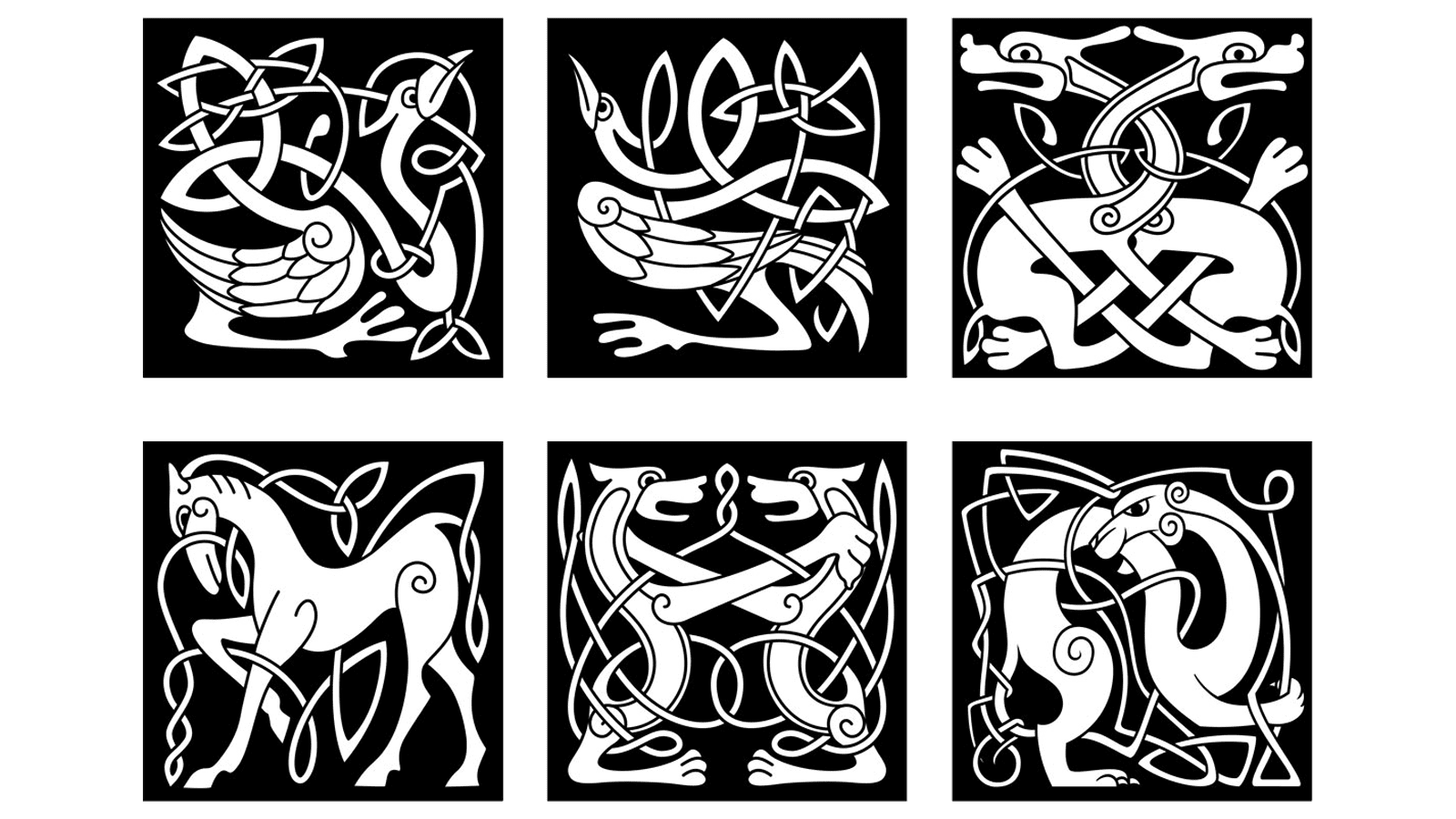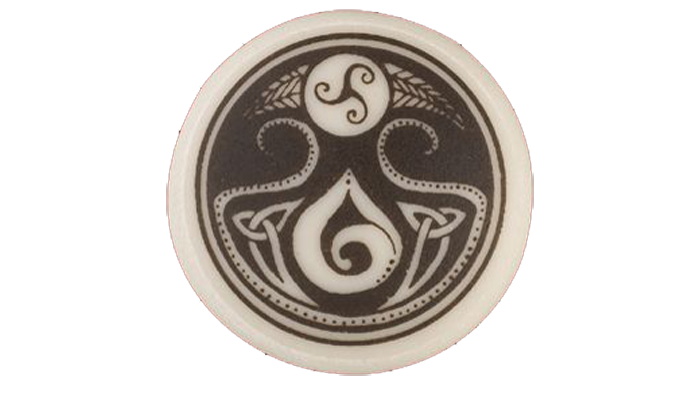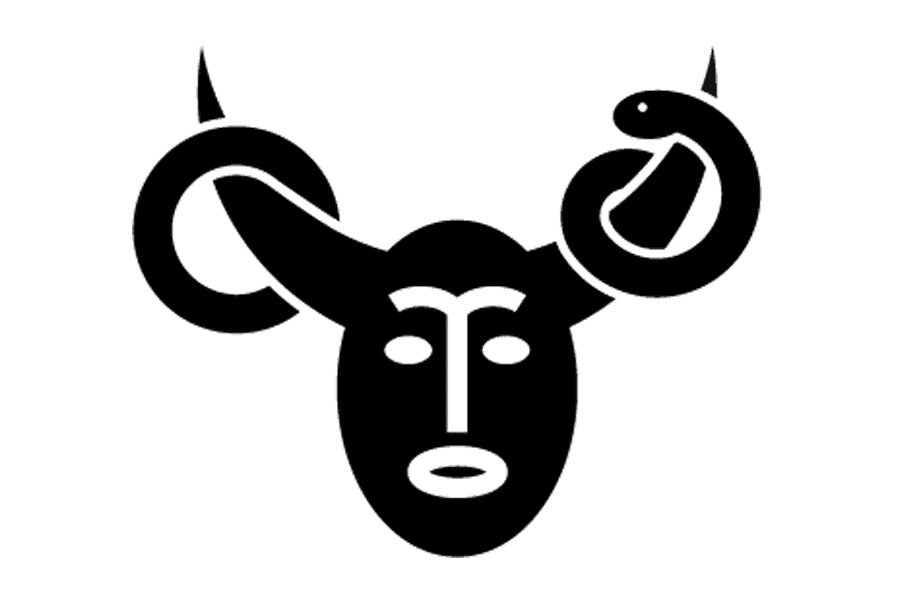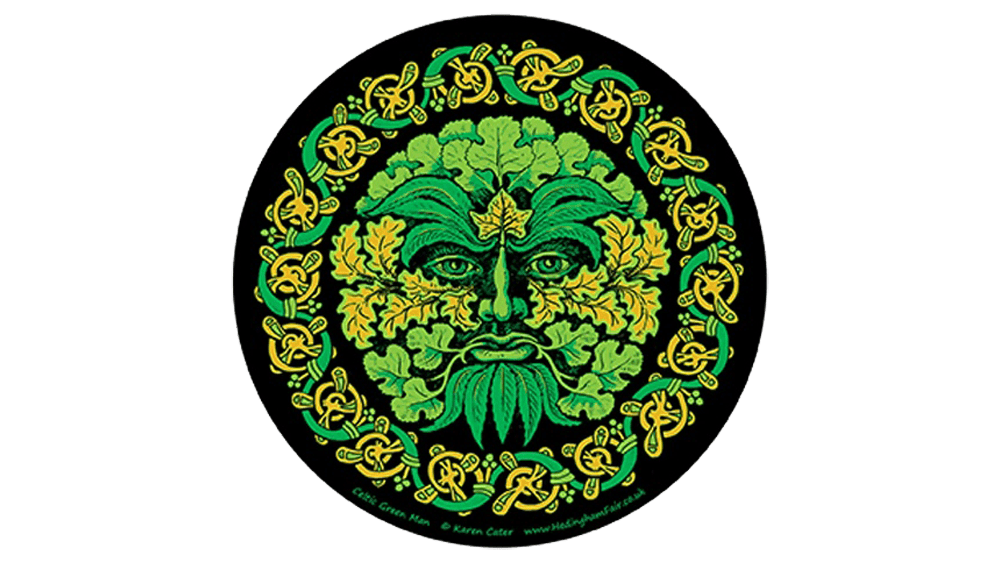Celtic Symbols Overview: Discover Their Meanings and History
Tags: symbols
The Celtic culture stands out within the global mosaic of civilizations. Stretching from the British Isles to the edges of Eastern Europe, their legacy profoundly influences numerous nations. At the heart of this heritage are Celtic symbols, a sophisticated array of motifs that encapsulate the ethos, beliefs, and artistic flair of these ancient people. This article explores these symbols in-depth, providing insights into their meanings, origins, and their widespread impact. Each Celtic symbol carries a unique story and significance, from spirals depicting the universe’s expanse to elaborate knotwork symbolizing life’s interconnectedness, offering a window into the Celtic spirit.
The Triquetra Emblem
The Triquetra, formed by three interlinked leaf-like shapes creating a triangle, stands for eternal existence and unity, without a discernible beginning or conclusion. Its roots are shrouded in mystery, commonly linked to the elements of earth, sea, and sky, or to the trinity of deities in Celtic mythology. In the Christian era, it evolved to symbolize the Holy Trinity.
The Celtic Cross
The Celtic Cross, with a circle crossing a traditional cross, represents a steadfast belief. It is thought to integrate Druidic wisdom, combining the Christian cross with the sun, a significant emblem in pagan traditions. This cross embodies not just faith but also the cycle of life and the connection between the heavenly and the earthly.
The Claddagh Emblem
Hailing from the Irish village of Claddagh, this symbol, consisting of two hands with a heart under a crown, epitomizes love (heart), allegiance (crown), and companionship (hands). The Claddagh ring, frequently shared among friends or spouses, embodies enduring connections and the harmony of feelings.
The Awen Emblem
The Awen, illustrated as a triad of rays converging towards a pathway ending in three dots, holds a special place in Druidic culture. It signifies the harmony of dualities – the masculine and the feminine, the corporeal and the ethereal, along with the flow of time from past through present to future. The Awen is perceived as a celestial illumination, steering one towards innovation, motivation, and spiritual awakening.
The Spiral Motif
The spiral, a symbol with deep historical roots, is usually carved into the stones of sacred Celtic sites, representing the cycle of life, the turn of the seasons, and the pursuit of deeper wisdom. Found in singular, dual, or triple patterns, the spiral embodies the perpetual movement and cycles of the universe and nature, underscoring the principle of constant renewal found in the natural world.
The Cauldron
In Celtic mythology, the Cauldron of Transformation symbolizes rebirth, change, and the ignition of new ideas. It is seen as the vessel of the Great Mother, marking both the beginning and the eventual return of all life. This emblem captures the Celtic view of an ongoing life cycle beyond death, indicating a process of continual regeneration and transformation. It affirms the creative might of the cosmos, energizing all artistic and spiritual pursuits.
Cernunnos
Cernunnos, the antlered god, personifies the wild, vigorous forces of nature. He represents the stewardship of woodlands and fauna, the rhythm of growth and decay, the fundamental elements of nature, and the connection between the physical and the mystical realms. The representation of Cernunnos highlights the Celts’ deep veneration for the natural world, their appreciation for the fragile equilibrium of life, and their respect for the Earth as the fountain of all sustenance and strength.
Ogham
Ogham, the mysterious script of the Celts, bridges the earthly with the spiritual through its ties to trees and vegetation. Each symbol denotes a specific tree, capturing qualities traditionally linked to them—robustness, insight, and persistence. This distinctive script serves as a testament to the Celtic connection with nature and the profound reverence they held for the earth. Sacred Ogham inscriptions on standing stones are treated with reverence, believed to provide safeguarding, blessings, and a pathway for communication with the divine.
The Salmon of Knowledge
The Salmon of Knowledge stands as a significant emblem within Celtic mythology, symbolizing the essence of wisdom, insight, and the pursuit of deeper truths. The legend narrates how the salmon acquired universal wisdom by eating nuts from the sacred hazel tree, showcasing the Celts’ high regard for intellect and their journey towards enlightenment. This symbol acts as a parable for the quest for truth, emphasizing the transformative nature of knowledge.
The Celtic Horse
Within the tapestry of Celtic culture, the horse was a symbol of dynamism, strength, and freedom, mirroring its pivotal role in society. It also represented agility, endurance, and the ability to navigate both the physical and mystical realms. Celebrated in Celtic mythology and art, the horse was thought to be a guide for the soul’s voyage, encapsulating power, spiritual leadership, and the elemental forces.
The Celtic Tree of Life
The Celtic Tree of Life weaves a narrative of the intricate link between the terrestrial and the divine. With branches stretching to the heavens and roots anchoring deep into the earth, it illustrates the sacred bond between the cosmos and the terrestrial realm. This symbol underscores the Celts’ profound respect for nature and their perception of existence as a perpetual cycle of inception, cessation, and resurgence, revealing the unity of all life across a complex, unseen network.
The Triskelion
The Triskelion, distinguished by its trio of spirals, signifies movement, advancement, and the perpetuation of existence, capturing the core of the Celtic spirit and their stance towards the vicissitudes of life. These spirals represent the rhythms of life, the transition of seasons, and the relentless march of time, advocating for an embrace of life’s perpetual motion. Moreover, the Triskelion symbolizes the harmony of diverse elements and the confluence of the physical, mental, and spiritual realms, mirroring the Celtic comprehensive view of the universe.
The Dara Knot
The Dara Knot is a Celtic symbol embodying strength, perseverance, and wisdom, inspired by the oak tree. This intricate knotwork, designed to reflect the oak’s elaborate root system, symbolizes the vital connections that nurture life. It metaphorically represents our inner strength, akin to the oak’s grounding roots that provide stability and support through adversities. The detailed pattern of the Dara Knot emphasizes the universe’s interconnectedness, reminding people of their place within a grand, interwoven network of existence.
The Shield Knot
Fashioned into a shield form by intertwining lines, the Shield Knot served as a powerful symbol of protection among the Celts. Affixed to battle gear, entryways, and dwellings, it was believed to shield against malevolent forces and safeguard from perils. The design of the knot, representing a fortress-like barrier, signifies the human resolve to protect oneself and loved ones from the unpredictabilities of life. Its presence in Celtic culture highlights the importance of security and health.
The Green Man
The Green Man, portrayed surrounded by greenery, embodies the cycle of renewal and the inexhaustible ability of nature to regenerate. A common motif in Celtic artwork, this icon signifies the seasonal renewal of flora and the endless cycle of growth, decay, and rejuvenation. The foliage-covered visage of the Green Man denotes the perpetual resilience of nature and the unity among all living entities. It represents the unending circulation of energy and the concept of ongoing transformation, accentuating the vibrant, changing essence of the natural realm.
Ailm
The Ailm symbol, often represented by a circle with a cross inside, is deeply rooted in Celtic mythology and is believed to signify strength, endurance, and resilience. It is thought to be derived from the first letter of the Ogham alphabet, which was a form of early Irish script. Ailm symbolizes the strength of the mighty oak tree, which was sacred to the Druids and represents stability and the connection between the earth and the spiritual world.
Bowen Knot
The Bowen Knot, also known as the square knot or the heraldic knot, is a symbol of protection and unbreakable bonds. It consists of loops that create a square shape with no discernible beginning or end. This symbolizes the interconnectedness of life and eternity, and is often used to represent loyalty, friendship, and the strength of relationships that withstand the test of time.
Brigid’s Cross
Brigid’s Cross is a sacred symbol in Irish culture, traditionally made from reeds or straw. It is associated with St. Brigid of Kildare, a patron saint of Ireland, and is believed to protect homes from harm and evil. The cross has a distinctive square center with four radials that extend outwards. It is traditionally made for Imbolc, a Gaelic festival marking the beginning of spring, and symbolizes new beginnings, protection, and the fire of inspiration.
Circular Knots
Circular Knots, or endless knots, are prevalent in Celtic symbolism, representing eternal life and the interconnectedness of all things. With no beginning and no end, these knots signify the cyclical nature of life, the enduring spirit, and the seamless flow of time. They often symbolize the eternal cycle of life, death, and rebirth, emphasizing the interconnectedness and continuity of the spiritual and the physical realms.
Cross of Triquetras
The Cross of Triquetras combines the traditional Christian cross with Celtic triquetras, creating a symbol of faith that embodies the Celtic culture’s unique blend of Christian and ancient Celtic beliefs. The triquetra, or three-cornered knot, symbolizes the Holy Trinity in Christianity, while also retaining its ancient meanings of life, death, and rebirth, or the three forces of nature: earth, air, and water. This symbol represents the synthesis of traditional Celtic spirituality and Christian faith.
Double Spiral
The Double Spiral is a motif found in Celtic art that represents the duality of life and the interconnectedness of the physical and spiritual worlds. It signifies balance and progression, with the two spirals often symbolizing opposing forces such as life and death, creation and destruction, or the sun and the moon, which are in constant motion yet always in perfect balance. The Double Spiral is a reminder of the journey of life and the growth and change that comes with it.
Druid Sigil
The Druid Sigil is a symbol associated with modern Druidry, consisting of a circle intersected by two vertical parallel lines. It is a symbol of the earth’s harmony and balance, and is used in rituals for invoking the Awen, which is the inspiration or essence that flows through all life. The Druid Sigil signifies the gateway between the worlds, the balance between the material and the spiritual, and the unity of all things within the universe.
Eternity Knot
The Eternity Knot is an intricate Celtic symbol, emblematic of the cyclical nature of life and the eternal flow of time. Its interwoven lines with no beginning and no end represent the interconnectedness of all things and the perpetual cycle of life, death, and rebirth. This knot is a powerful reminder of the enduring bond between the physical and spiritual worlds, underscoring the Celtic belief in the continuity of life and the interconnected nature of existence.
Five Fold
The Five Fold symbol is a unique Celtic emblem, comprising four outer circles that symbolize the four classical elements—earth, air, fire, and water—centered around a fifth, representing balance and unity. This quintessential design embodies the Celtic understanding of the world’s harmony and the interconnectedness of all life forces. It serves as a metaphor for the unity of all things and the essential balance needed to maintain the order of the universe.
Quaternary Celtic Knot
The Quaternary Celtic Knot is a complex symbol featuring four distinct points interlaced within a continuous knot. This design is thought to represent the four cardinal directions, the four elements, or the four seasons, depending on the interpretation. It symbolizes the integral balance and interdependence of these quadrilateral forces, highlighting the Celtic belief in the interconnectedness and cyclical nature of life and the universe.
Solomon’s Knot
Solomon’s Knot is a symbolic knot that transcends cultural boundaries but holds special significance within Celtic symbolism. It consists of two interlocking loops with no clear beginning or end, representing wisdom, protection, and the idea of eternity. In Celtic culture, it is often seen as a symbol of the connection between man and the divine, embodying themes of unity, strength, and the enduring nature of life.
The Bird
In Celtic symbolism, the bird is a potent emblem of freedom, transcendence, and the link between heaven and earth. Different birds carry specific meanings; for instance, the crane symbolizes wisdom and longevity, while the eagle represents strength and courage. Birds are revered as messengers of the gods, their ability to fly high in the sky seen as a connection to the spiritual realm and the higher aspects of existence.
The Boar
The Boar is a powerful Celtic symbol of courage, fierceness, and protection. Revered for its strength and tenacity, the boar embodies the warrior spirit, signifying the bravery and resilience required to face life’s challenges. It also represents prosperity and abundance, as the boar was a vital source of sustenance for the Celts, signifying the earth’s bounty and the cycle of life and death.
The Bull
In Celtic culture, the Bull is a symbol of strength, potency, and fertility. Revered for its physical power and virility, the bull is often associated with prosperity and wealth. This emblem underscores the importance of the bull in Celtic society, not only as a crucial part of their agricultural livelihood but also as a spiritual icon representing the earth’s fecundity and the cycle of regeneration.
The Deer
The Deer in Celtic symbolism stands for gentleness, intuition, and the ability to move through life with grace. It is often associated with the forest deity Cernunnos, symbolizing fertility, nature, and the cycle of growth and rebirth. The deer’s presence is a reminder of the importance of deep connection with the natural world, guiding individuals towards inner peace and spiritual awakening.
The Dragon
The Celtic Dragon, a symbol of sovereignty, power, and wisdom, stands as a potent emblem of the ancient Celts’ deep connection to the mystical and the natural world. Revered for its strength and the fiery breath, the dragon was believed to be a guardian of treasures and secrets, embodying the primal forces of the universe and the cyclical nature of life and death. It also represents transformation and the Celt’s respect for the earth and its cycles.
The Griffin
The Griffin, combining the majestic attributes of both the lion and the eagle, signifies strength, courage, and leadership within Celtic symbolism. This mythical creature was thought to be a powerful protector, guarding treasures and sacred sites from evil forces. Its dual nature symbolizes the mastery over both the land and the sky, embodying wisdom and the ability to see the truth.
The Hare
In Celtic culture, the Hare is a symbol of fertility, rebirth, and the lunar cycle. This elusive creature, associated with the moon, represents intuition, adaptation, and the ability to thrive in darkness. The hare is also linked to the Celtic goddess Eostre, embodying the renewal of spring and the endless cycle of life, death, and rebirth.
The Sailor’s Knot
The Sailor’s Knot, known for its two intertwined ropes, symbolizes harmony, friendship, and love that is eternal and unbreakable. It is a testament to the Celts’ deep connection with the sea and their reliance on it for survival. This knot, often used by sailors to remind them of their loved ones during long voyages, represents the strength of bond and connection, irrespective of distance.
The Shamrock
The Shamrock, a three-leaved clover, is one of the most recognized symbols of Celtic heritage, embodying the essence of the trinity in various aspects of life and the universe, such as past, present, and future, or earth, sea, and sky. It is closely associated with St. Patrick, Ireland’s patron saint, and is believed to bring good luck and protection from harm.
The Snake
In Celtic mythology, the Snake is a symbol of transformation, healing, and rebirth. This creature’s ability to shed its skin and emerge anew was revered as a powerful representation of the cycles of life, death, and regeneration. Snakes were also seen as guardians of the underworld, embodying wisdom, and the connection between the physical and spiritual worlds.
Triskeles
The Triskeles, characterized by its three interlocked spirals, signifies the dynamic concept of progress and competition, representing the continuous movement and the flow of time in the Celtic tradition. It embodies the trinity in various forms, including life, death, and rebirth, or the elements of earth, water, and air, highlighting the interconnectedness of all things.
Wheel of Taranis
The Wheel of Taranis, named after the Celtic god of thunder, is a symbol of the sky, weather, and fertility. This eight-spoked wheel represents the solar calendar, marking significant times of the year and the festivals that correspond to them. It embodies the cycle of the seasons, the balance of nature, and the harmony between the earth and the cosmos.
Historical Context and Influence
The Celts, originating from Central Europe around 1200 B.C., spread across what is now Ireland, Scotland, Wales, and further, bringing with them a culture deeply entwined with nature and Druidic beliefs. Their symbols, reflective of a society that prized balance, insight, and the interconnectivity of all living things, continue to captivate many with their beauty and profound significance.
These ancient motifs find modern expressions in jewelry, tattoos, literature, and art. They enchan a global audience and serve as a bridge to a past where symbols transcended mere artistry to embody deep human experiences. They remind us of the universality of symbols and their ability to transcend language and cultural barriers, share profound truths, and connect us more deeply as a global community.
Conclusion
The enduring symbols of the Celtic culture offer a window into the spiritual and cultural fabric of this ancient society, inviting viewers to explore their perceptions, values, and artistic expressions. As people delve into these symbols, they uncover the mysteries of the ancients, finding resonance with universal themes of existence, the natural world, and the cosmos. Within the Celtic motifs of loops, knots, and spirals lies the eternal narrative of humanity, intricately woven into the universe’s vast tapestry.






































